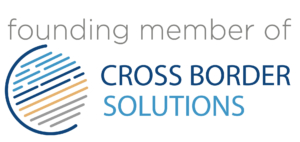The Great Resignation: How to deal with it?
Over the past few years, we have read time and again about large waves of employee layoffs spanning numerous industries. The USA in particular was hit hard by the so-called “Great Resignation” and had to find short-term solutions to avert the worst. But even in the DACH region, the restrictions and losses caused by the pandemic did not pass without a trace. Many companies in this country also had to suffer from one or the other wave of employee layoffs.
With the right expertise, however, it is possible to recognize early on when such a wave is imminent. Subsequently, there are numerous sensible options to counter a wave of dismissals from which both employees and companies can benefit.
Table of contents
What are the reasons for the wave of employee resignations?
There can be various reasons why employees choose to resign. Although the number of resignations increased immediately after the pandemic, it was not the primary reason. Rather, the pandemic exposed the obvious weaknesses in many companies.

If the wave of dismissals breaks over your company, things can quickly get stormy.
The most common reasons for resignations include:
- Poor leadership behavior that demotivates many employees. Especially during challenging times of transformation. Experienced interim managers can identify and address many problems early on.
- Imbalanced work-life balance creates a permanently high workload. Without adequate compensation, this often leads to employee resignation in the long term.
- Unattractive activities or areas of responsibility that are perceived as meaningless are also among the reasons. Many employees, on the other hand, also strive for personal fulfilment at work.
- Lack of financial incentives encourages a wave of employee resignations. This is especially true in times of high inflation to avoid a loss of real wages.
- Often it is also a more attractive position that an employee desires. The pursuit of career advancement then leads to a change.
What are the consequences of the employee wave of resignations?
A significant wave of resignations can have considerable consequences for any company, as losses in productivity and damage to the company’s image are hard to avoid. In addition, there are usually high direct and indirect costs that add to the burden.
- Loss of productivity: If an employee has already resigned internally, his productivity usually decreases. This effect then intensifies once the resignation has been submitted. However, the company continues to pay the full salary during this phase, which often lasts months.
- Image loss: A mass dismissal casts an incredibly negative light on the company. The respective reasons are almost secondary, because the overall impression dominates in this case. New applicants might interpret this as a negative sign and stay away immediately.
- Direct costs: Resignations not infrequently lead to legal disputes, which can result in lawyer and court costs. In this context, there are also always severance packages as well as costs for new job advertisements, recruitment procedures and often also for headhunters.
- Extensive onboarding: Many companies underestimate the significant efforts involved in onboarding new employees. Depending on the field, it can take approximately 6 to 12 months for a suitable successor to reach their full performance potential.
For these reasons, it is incredibly important for a company to recognize an employee wave of resignations early on. Subsequently, appropriate countermeasures can be implemented that benefit both employees and the company.
How can I tell if my company is facing a wave of resignations?
If several employees quit at the same time, it is usually already too late. However, there are ways to recognise a wave of resignations at an early stage. Therefore, pay attention to the following signs in critical phases
- Declining productivity: If employees have already resigned internally, productivity declines. This becomes noticeable, for example, through a lack of enthusiasm and creativity. Often there is no longer even the proverbial “work to rule“.
- Lack of communication: There are people who like to communicate and people who are more quiet. However, if there is a sudden drop in the willingness to communicate of an otherwise active personality, this can be a sign of dissatisfaction and subsequent dismissal.
- Requirement of the interim reference: In most cases, it is absolutely normal to request an interim reference. For example, when there is a change within the company or after reaching an important milestone. However, if such an event is missing, this can be an indicator for upcoming job applications of the employee.
- Procrastination on long projects: Many employees wish only the best for the company even after they leave. So if the desire to quit is fixed, they try to reduce their involvement in long projects. Completed activities, after all, do not require handover or induction.
- Absenteeism by the day: If an employee is in the process of applying for a job, they often have to attend interviews during the working day. Recurring absences by the day, especially in the middle of the week, can therefore be an indicator of a wave of employee resignations.
How can employers address the employee wave of resignations?
When good employees quit, it is an incredibly high burden for any company. However, many resignations can be successfully prevented if managers act correctly. First and foremost, management must be a good role model, communicate transparently and take employees’ problems seriously. Especially during a restructuring phase in the company, both professionalism and empathy, as can be expected from experienced interim management, for example, are important building blocks for success.

Many employees also crave a high degree of flexibility and opportunities to work from home. This can help to rebalance an unbalanced work-life balance. Nowadays, modern IT solutions allow many activities to be carried out efficiently regardless of the place of work. A forward-looking company should therefore weigh up all the options. Meaningful activities and personal development as well as employee advancement are other important topics.
In the end, however, salary and financial incentives also play a major role, especially due to high inflation. It is true that the solution cannot always be to simply pay more. But there are also attractive profit-sharing models from which both sides can benefit. In the end, dismissing the employee usually costs the company more than a creative solution to the salary problem.
Conclusion: Experienced interim managers minimize departures during critical phases
A wave of employee resignations can pose huge challenges for any company. The impact on productivity and image can be considerable, and there are often high costs and expenses for adequate new hires. Especially in times of upheaval or turnaround, an experienced interim manager is able to address problems early and transparently, thus minimizing layoffs.
As an experienced service provider at your side, we help you to master even the most difficult times. Our professional interim managers benefit from many years of experience and know how to take employee concerns seriously. We help you to successfully complete projects and turnarounds as well as to expand into new attractive markets in Asia and Eastern Europe.
Contact us now, and we will be pleased to provide you with advice and support.






Leave a Reply
Want to join the discussion?Feel free to contribute!